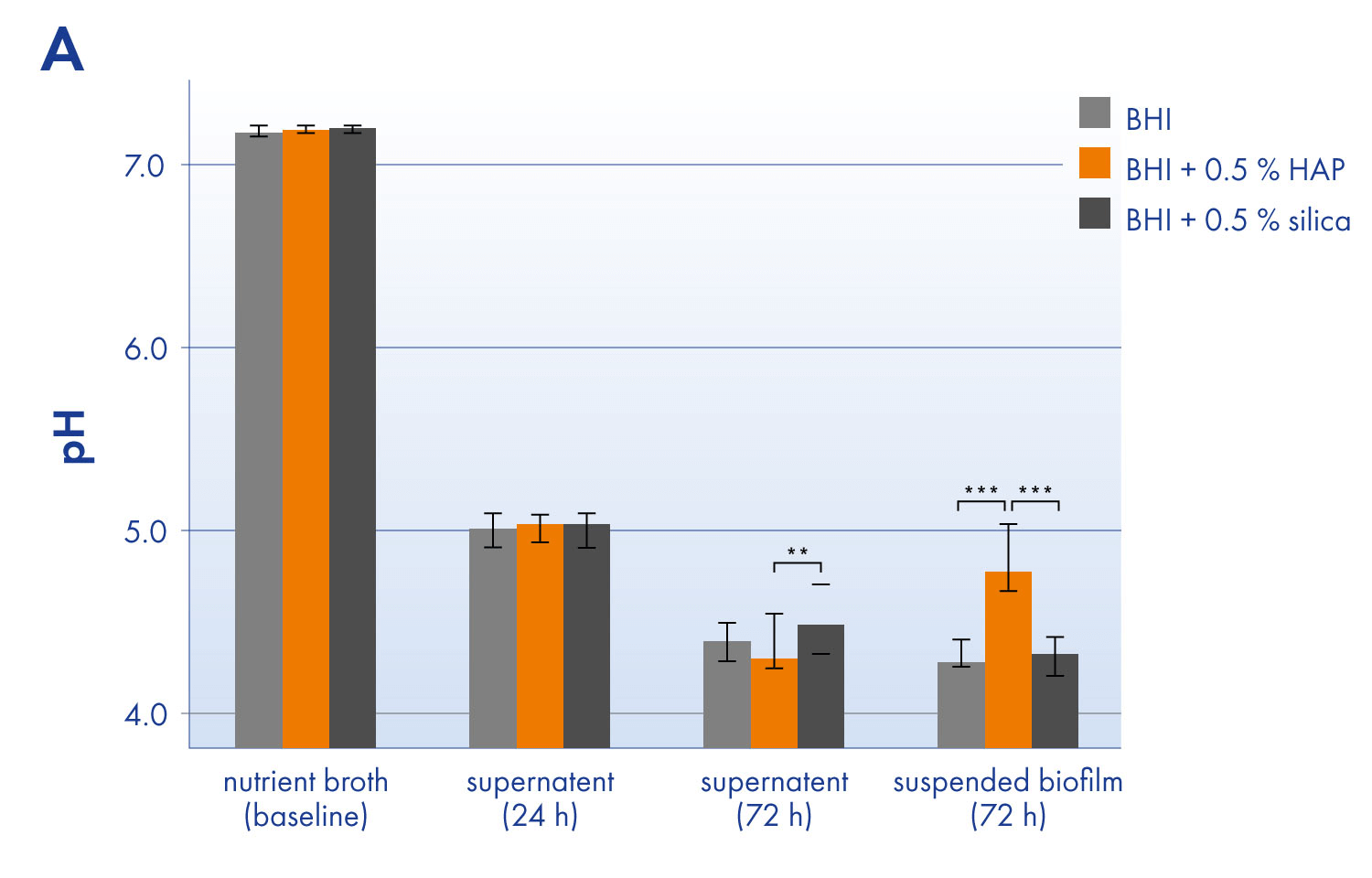Introduction
The purpose of toothpastes and their ingredients is to clean teeth and repair minor damages that occur throughout the day. One approach here is to use BioHAP. This active substance forms a protective layer on the tooth surface, protecting the teeth and repairing microfine defects. BioHAP mainly consists of calcium and phosphate. Calcium is known for its many positive properties for our teeth and body. A study conducted at the University Hospital in Regensburg (Germany) has now shown that calcium is released from BioHAP following acid challenge.
Question
Is calcium released from BioHAP following bacterial acid challenge?
Material and methods
This in vitro study tested whether BioHAP releases calcium and buffers acids in planktonic cultures and biofilm.Three groups were defined: Negative control (bacteria: Streptococcus mutans), control with S. mutans + conventional abrasive particles (hydrated silica) and the test group S. mutans + BioHAP.
All groups were treated in such a way that the bacteria were able to grow well and produce acids (addition of sugar). The pH value was then measured and free calcium in the biofilm was observed.
Results
The group with BioHAP showed a significant increase in pH value by approx. 0.5 units (a positive factor for our teeth) compared to the other groups. Significantly more calcium was released in the BioHAP group than in the other groups.
Conclusion
Calcium is a main component of our teeth. If a large amount of free calcium is in the oral cavity and there is an acid challenge, our teeth are protected from dissolution. BioHAP supplies calcium to protect our teeth and also ensures that the acids from caries bacteria are weakened.
Read more information in the study titled "Ca2+ release and buffering effects of synthetic hydroxyapatite following bacterial acid challenge".
Source: Cieplik, F. et al. Ca2+ release and buffering effects of synthetic hydroxyapatite following bacterial acid challenge. BMC oral health 20, 85 (2020).



